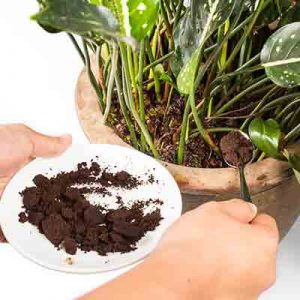
The sweltering heat of the summers has paved way for clouds looming over us and rains showering our cities. Come monsoon, there is a cool breeze, a dip in temperature and moist air that predominates the scene. But more than that, there are scintillating colors that look even more vibrant and livelier with raindrops. These are the colors of flowering plants that bloom beautifully in this season. This is also the time when plants get natural nourishment in the form of rainwater and thus grow and bloom quicker than usual – best experience for plant lovers!
If you’re looking forward to a blossoming garden in your abode, planting and re-potting during monsoons can help you naturally achieve that, while reducing the garden development and maintenance efforts in the process. The temperature drop and humidity in the air further propagate plant growth.
Having said that, monsoon is also the time when your garden needs extra care and protection from unwanted weeds, pests and algae. Here are some ways you can ensure your garden stays healthy and beautiful in the rains and throughout the year:
Trim/Prune Regularly to Enable Fresh Growth

- If you have long branches in your trees, the heavy winds may blow them away or cause a wreckage to your entire garden. Trim the branches of your trees and get rid of dry & dead leaves and extra growth that may have happened. Prune and trim the plants either just before the season starts or during the season to boost flower budding and prevent wild growth.
- Cut off flowers from their stem if they start to wither, mow the grass to breathe some life in your lawn. Hedging, choosing stems or damaged leaves for selective cropping of foliage makes your garden look neat, helps fresh shoots to grow and lets all the plants stay equally nourished with air, sunlight and minerals.
Harvest Rainwater

- The best way to nurture your garden during monsoon is through rainwater harvesting. Make sure you don’t overwater during this season. Water only when leaves droop down & fall or the soil is dry.
- Store the rainwater and use it as sprinklers on plants to freshen them and stimulate proper growth. Sprinklers help in uniform nourishment of all your plants, trees and shrubs, paving the way to a lush, adequately watered and nourished garden.
Ensure Proper Drainage

- A related problem during monsoons can be of waterlogging if proper drainage is not maintained or small puddles form in your garden. Drain out the excess water and ensure you have a steady drainage system in place.
- Stagnant water not only inhibits plant growth by rotting its roots but is also the home ground for insects, worms, mosquitoes and pests harmful to both your garden and your own health. To avoid this, maintain a garden with pots that have little holes for the accumulated rainwater to pass through
Make a Careful Choice of Plants/Provide Shade

- There are some plants that thrive particularly well during the rainy season. Some of them are Cape Jasmine, gloriosa lily, hibiscus, wild balsam, dahlias, marigolds, water hyacinth and more. Only those plants and shrubs should be planted that can adapt to the rough climates and excessive moisture levels of this season.
- Use perforated sheets as shades to protect plants that are young or would not be able to adjust to the seasonal change. Shades also prevent soil erosion during rains and also ensures that rainwater can reach the entire green space and nourish it all through.
Fertilize enough

- Using natural fertilizers in your plants by way of composting, manuring and mulching around the plants is healthier and a better technique than chemical fertilisers as necessary nutrients seep through the soil with the rainwater. Compost is absorbed by the plants as soon as it is used as the pores of the plants open up during the rains.
- Make use of eggshells, tea bags and other kitchen waste for the process of composting – this will enrich the soil and keep the garden replenished.
- Mulching is to apply a layer of material (nutrients) on top of the soil. This helps plants get the required nourishment and have a healthy growth.
Use Pesticides

Pests can eat away all your fresh saplings and young plants or encroach upon the nutrients in the soil. Carefully sprinkle some pesticides to kill these pests in time especially after pruning as this is the time when fresh shoots appear.
Stop Weeding and Insect Growth
- Weeds and insects are a common problem during monsoon as rainwater and wind brings along these unwanted creatures. Weeds can intervene with the nourishment and natural growth of the plants.
- De-weed your garden before they can do any damage. More so, if your garden becomes a natural habitat for butterflies, bees, earthworms, hummingbirds, frogs and toads, insects won’t find a place to thrive.
Monsoon is the right time to experiment with new saplings, fresh shrubberies and new trees as also with indoor plants and terrace gardens especially for those who lived in cramped apartment spaces. Use of rocky soil and pathways can prevent the rainwater from flowing away. Leverage this season to plan the layout, types of plants and veggies and their positioning for the upcoming winter months.
Cheers to happy gardening in the rains!






